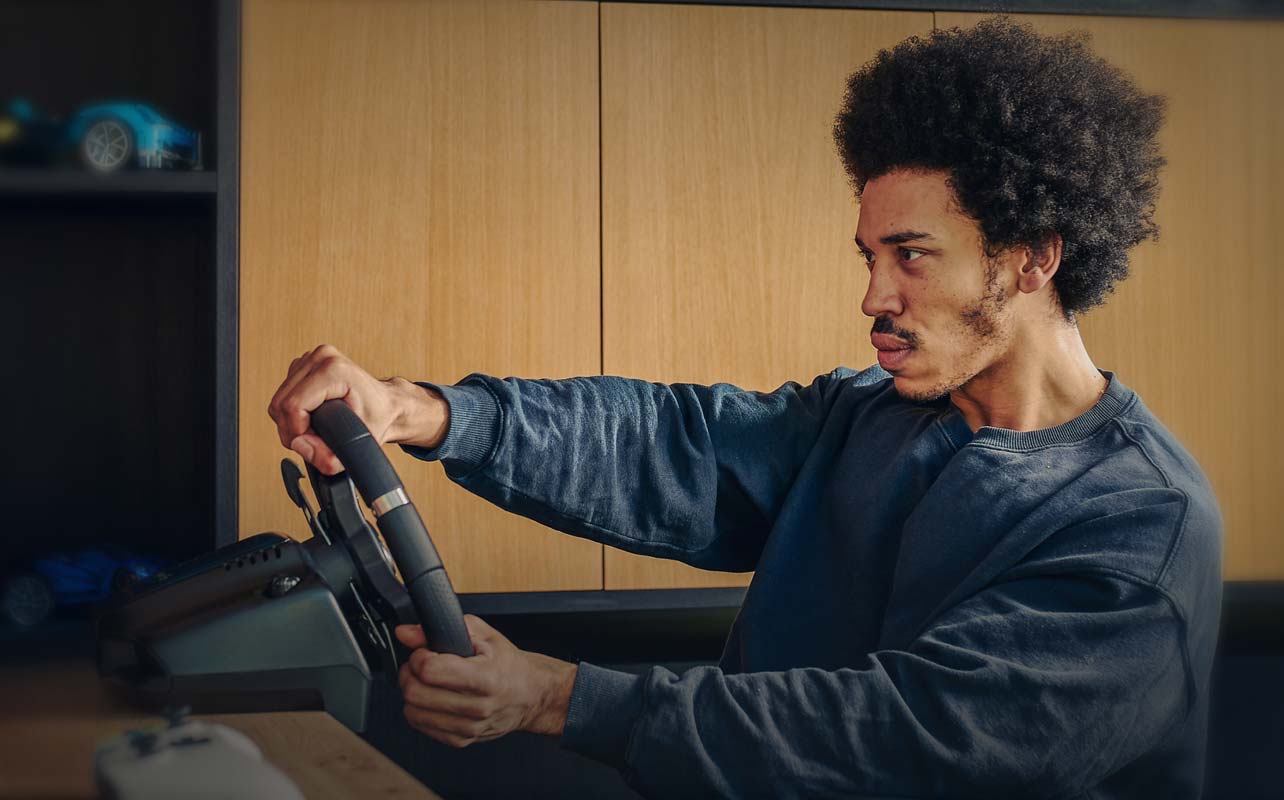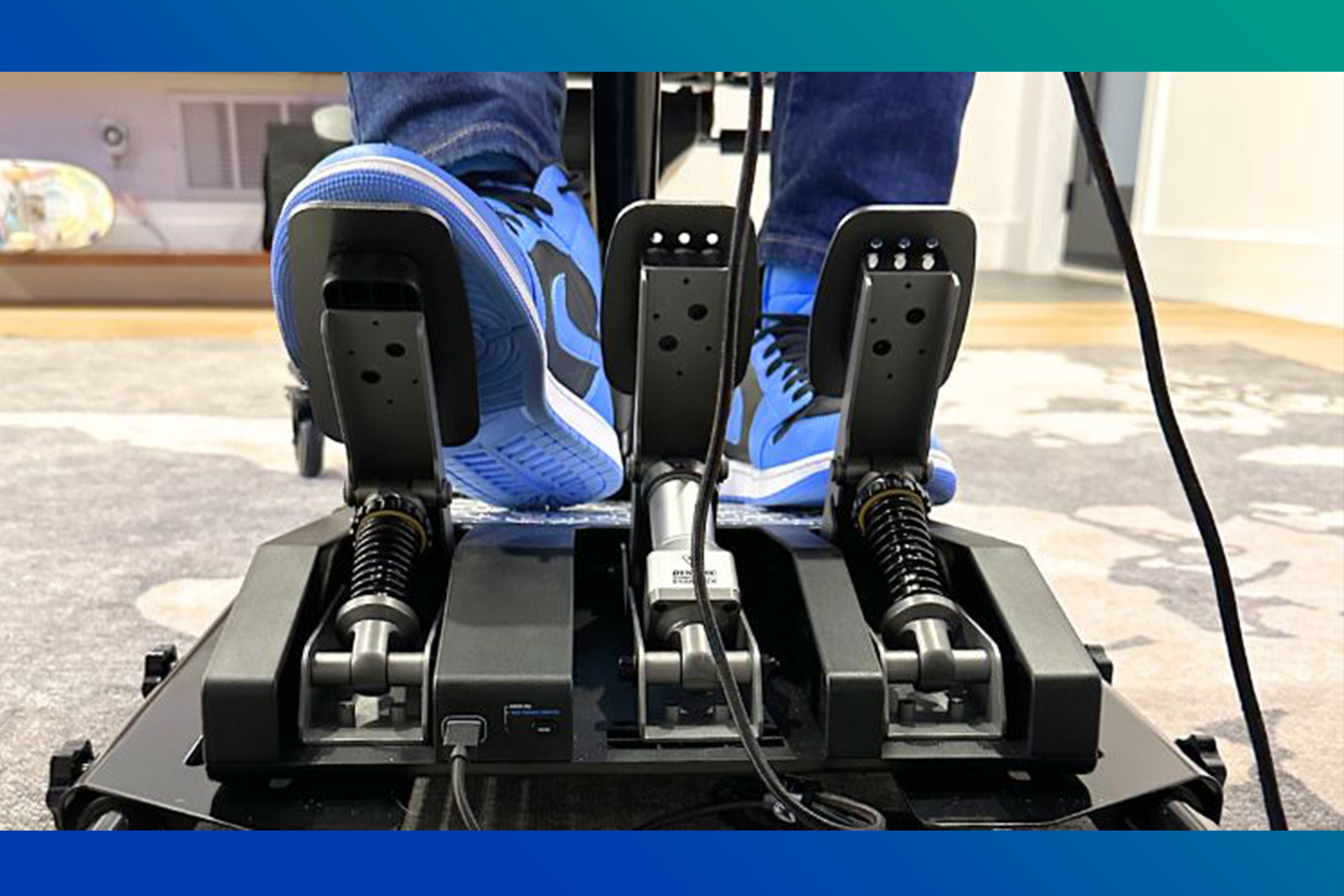
Whether you dream of tearing up the track in Formula 1 or taking to the skies, racing and flight simulator rigs bring those experiences home. Once reserved for professional training programs, these simulators have evolved into setups that suit just about everyone and a range of budgets. From hobbyists and aspiring racers to aviation enthusiasts, there’s a rig designed for every use case.
This beginner’s guide breaks down everything you need to know before getting started. From understanding what a simulator rig is, to learning why they are such a popular experience among gamers and hobbyists. I’ll walk you through how to plan your first setup and what kind of gear you need.
What is a simulator rig?
A simulator rig is the hardware backbone of your racing or flight simulation experience. It’s a frame designed to hold your main controls, such as a steering wheel or flight yoke, pedals, seat, and other accessories. This keeps everything in a stable, ergonomic position. The goal of a rig is to replicate the feel of being inside a real vehicle or aircraft, providing added immersion and precision to your gameplay experience.
Different types of rigs
There are several types of rigs, ranging from simple to highly advanced. A wheel stand is the most compact option, perfect for beginners or those working with limited space. It’s a foldable stand that locks your steering wheel and pedals securely in place without requiring a dedicated seat. Moving up a level, cockpit rigs feature a built-in seat and a sturdier frame, providing a more realistic and comfortable experience during extended sessions. At the top end, full simulator setups often include motion-enabled platforms, multi-monitor displays, and sometimes even virtual reality integration, allowing you to feel every turn, bump, or burst of turbulence.

The contrast between driving and flight sim rigs
While both racing and flight simulators share similar principles, they differ in how they translate control and motion. Racing setups focus on steering wheels, pedals, and sometimes shifters or handbrakes. On the other hand, flight rigs rely on yokes, throttles, and rudder pedals to mirror real-world aviation controls.
Why are simulators so popular in 2025?
Simulation gaming has grown from a niche hobby into a global phenomenon, and 2025 marks one of its biggest years yet. Competitive sim racing leagues are thriving, with professional drivers and eSports teams joining the mix. Meanwhile, the latest version of Microsoft Flight Simulator continues to redefine realism in virtual aviation, attracting players who want to explore the world from the comfort of their living room.
Bridging real and virtual worlds
Part of this growth stems from the way simulators bridge the gap between entertainment and education. They sharpen reflexes, build coordination, and provide a hands-on approach to learning complex systems. The precision feedback from a racing wheel or the tactile controls of a flight yoke can help users improve their real-world driving or piloting skills, making the experience as practical as it is fun. Curious if a simulator rig could actually make you a better driver or pilot? Check out our article to find out!
A growing sim audience
The rise of streaming and content creation has also played a significant role. Streamers often showcase elaborate simulator rigs because they look visually impressive and engage audiences. I’ve watched a few streamers who are technically impressive or have great setups, and it always catches my attention. A well-set-up rig not only feels realistic but also looks great on camera, helping content stand out on platforms like Twitch or YouTube.

A deeper level of immersion
Most importantly, simulator rigs deliver something that traditional gaming can’t: a true sense of immersion and escape. The tactile feedback, realistic motion, and physical presence of sitting in a cockpit create an emotional connection that draws players in. Whether you’re pushing through a rainy lap or descending through storm clouds in a Cessna, the sensation of “being there” is what keeps players coming back.
What gear do you need to get started?
Starting your first simulator setup might seem daunting, but it’s easier than it looks. It’s a process that also doesn’t have to break the bank. The most important thing is to build around your interests and available space. A basic racing simulator rig or flight simulator setup for beginners typically includes a few essential components: a steering wheel or yoke for control, pedals for acceleration, braking, or rudder movement, and a sturdy frame or stand to mount everything securely. You’ll also need a display, whether that’s a gaming monitor or a TV, to immerse yourself in the action.
Add to your rig piece by piece
As your passion grows, you can expand your setup with additional accessories. Racing fans often add shifters, handbrakes, or motion systems to increase realism. Flight sim enthusiasts might introduce throttle quadrants, rudder pedals, or even a multi-screen configuration to recreate a panoramic cockpit view. Surround sound or high-quality headsets can further enhance immersion, while virtual reality headsets take the experience to an entirely new level.

Start with the core elements
You can begin modestly with an entry-level wheel stand, a basic wheel and pedal set, and a single monitor. From there, you can gradually upgrade to a cockpit rig with a professional-grade wheelbase or yoke, dedicated seat, and more advanced visual or motion systems. Every step enhances the experience, making your setup feel that much closer to the real thing.
Who are simulator rigs for?
Simulator rigs come in a variety of different types that appeal to a wide audience. Some are designed for a more casual arcade experience, while others get into detailed aspects of motor racing and aviation. That diversity is part of what makes them so exciting.
A casual or pro sim experience
Casual gamers often discover that using a rig is simply more fun and immersive than playing with a controller, especially in titles like Gran Turismo 7 or Forza Motorsport. For aspiring racers, rigs offer a safe and affordable way to practice racing lines, braking points, and driving strategies that can translate directly to the track.
A first step toward the real thing
Flight enthusiasts find simulator rigs especially rewarding. Whether you’re a student pilot or simply a fan of aviation, a flight sim rig offers a lifelike experience that mirrors the complexity and beauty of real-world flying. Again, ensure you train first with professionals before attempting any real-world racing or flight. But a fun, low-stakes way to start your motorsports or aviation journey is with an ultra-realistic sim rig.
Content creation and streaming
Content creators and streamers use rigs to enhance their videos and content. The visual appeal of a cockpit or race seat setup instantly adds a “cool factor” to any stream or video. Even students and tech hobbyists are drawn to rigs because they offer a chance to explore mechanical systems and motion tech in a safe, interactive way.
Tips for getting started
Before diving into your first build, take a moment to assess your available space. Whether you’re setting up in a bedroom, office, or living room, measuring your area ensures your rig fits comfortably without overwhelming the room. Once that’s sorted, set a realistic budget. Many beginners are surprised to learn that an effective starter setup can cost less than $500, with plenty of room to upgrade later.
A sim rig experience for you
Next, think about what kind of simulator experience you want. Racing fans might gravitate toward Gran Turismo 7, iRacing, or Assetto Corsa Competizione, while aviation enthusiasts can explore Microsoft Flight Simulator. There’s no need to buy everything at once, sim racing and flight simulation are modular hobbies that grow with you. Start small, refine your setup over time, and upgrade components as your interest and skill level develop.
Connect with the sim community
Finally, don’t go it alone. There’s a passionate community of sim racers and pilots online, eager to share advice, setup tips, and product recommendations. Joining Reddit communities, Discord servers, or following YouTube creators can provide invaluable insights and inspiration for your own build.
Level up your gaming immersion with the right sim rig
Simulator rigs aren’t just about collecting gear; they represent a new way to experience games, blending immersion, skill, and creativity into one rewarding hobby. Whether your goal is to fly across continents or race at lightning speed, there’s never been a better time to hit the tarmac. Modern sim technology has made it easier than ever to bring professional-grade realism home, no matter your budget or space. Explore Best Buy Canada’s growing collection of simulator gear, and be sure to check out our detailed comparison and build guides for more ways to elevate your setup.





